Although our purpose in visiting Ishpeming was to learn more about iron mining, I was surprised to see that it is the home of the U.S. Skiing and Snowboarding Hall of Fame -- a subject near & dear to my heart.
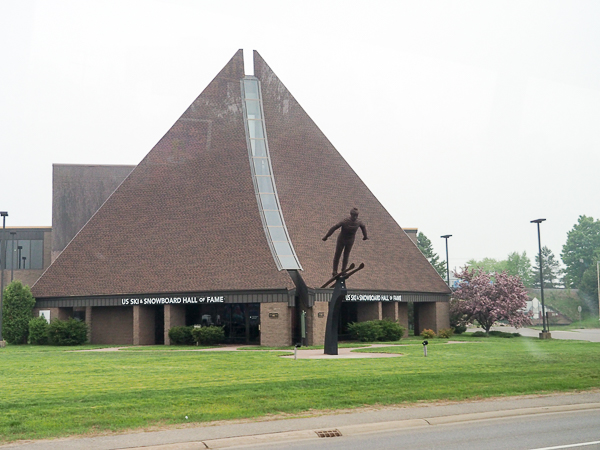
We only drove past the hall of fame, but I would have loved to stop. It turns out that Ishpeming is the unlikely "birthplace of organized skiing." The National Ski Association was founded there in 1905. Today it is not only the home of the Hall of Fame, but an annual ski jumping tournament that celebrated its 138th year in 2025. For the arithmetically challenged, that means the competition started in 1887!
The National Ski Association has changed names over the years. I was once a member when it was called the US Ski Association (USSA), but that was when our club was a part of the organization. It is now U.S. Ski & Snowboard.
The design of the building is a clear indication of the Nordic influence.
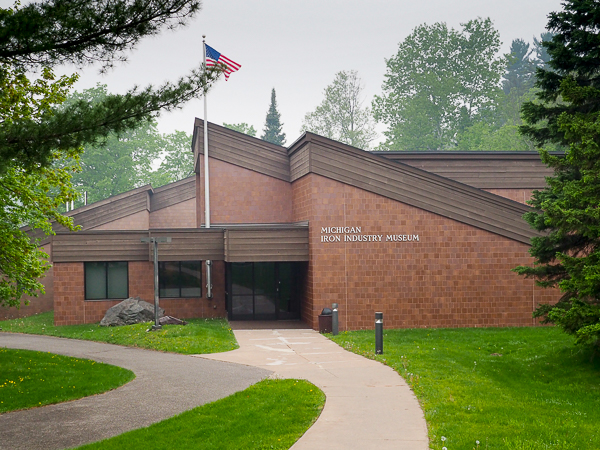
This was our destination. The Iron Industry Museum.
I didn't see many of the indoor exhibits and there wasn't enough time to hoof it down to the location of the old forge in the valley by the Carp River.
Although the museum was dedicated to mining, most of the outside exhibits pertained to the local Native Americans.
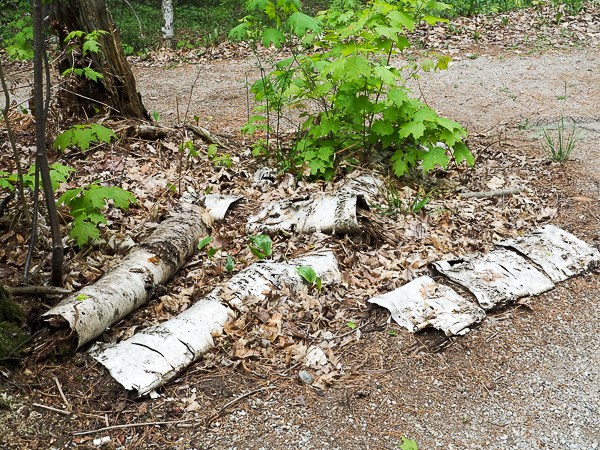
One sight was this birch bark, a remnant of a now-dead tree. The Native Americans used birch for many things including canoes: dwellings, snowshoes, sleds, baby carriers, spears, hunting calls, etc.
The bark was stripped from the tree in early March -- large trees produced the largest segments, which needed the least sewing to use. I've seen varying discussion of whether the tree was first cut down or if birches, like cork oaks, could survive having their outer bark removed.
The tree that produced this bark is long gone -- rotted away, but its bark still remains as a testament to its longevity.
The sap of balsam fir seals sewn seams to make them water-tight. Here's a description of how a canoe is made.
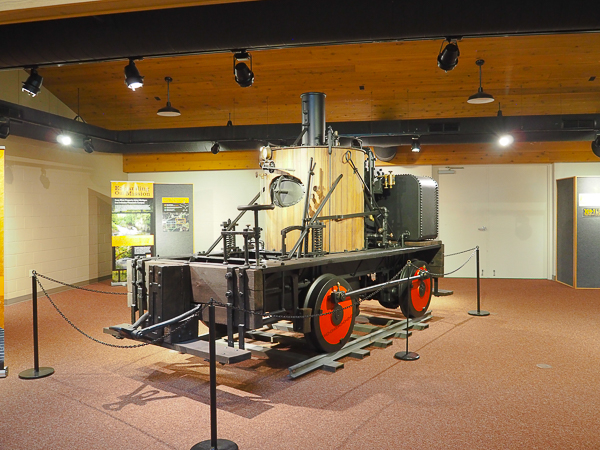
The Yankee is one of the oldest surviving steam locomotives in the US. The Jackson Mine used it beginning in 1868. In 2023 it was restored and placed on display.
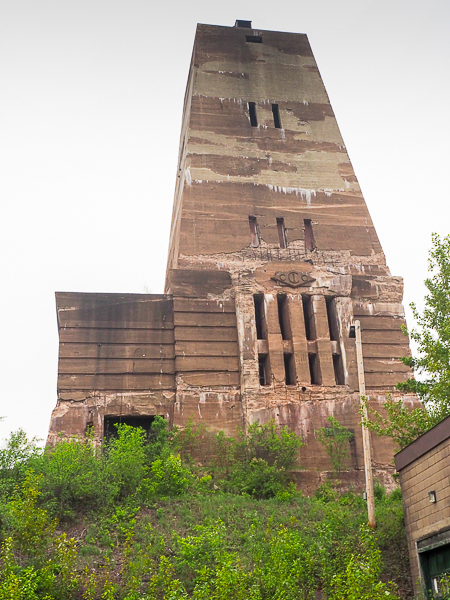
After the Iron Industry Museum, we proceeded to another museum: the Cliffs Shaft Mine Museum.
The mine was first established in 1865. The original wooden headframes began to deteriorate and were replaced in 1919 by concrete ones built around them. Since the company president directed that the new structures also be beautiful, the company hired an architect who designed this Egyptian revival structure. There were two built, but we only visited this one up close. It is much deteriorated and not open to visit, but still striking.
A third, more functional-looking headframe also still exists.
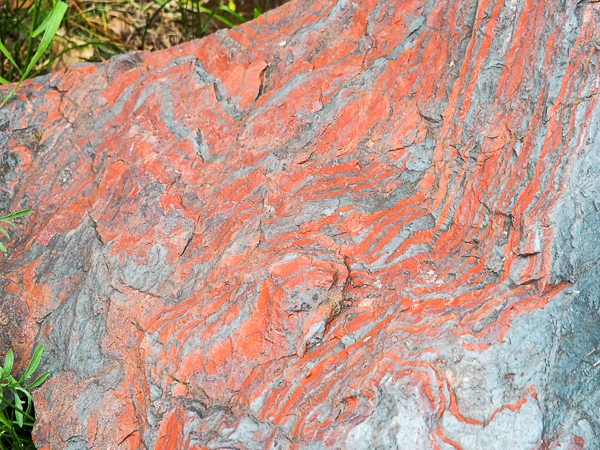
A large boulder containing hematite found at the mine.
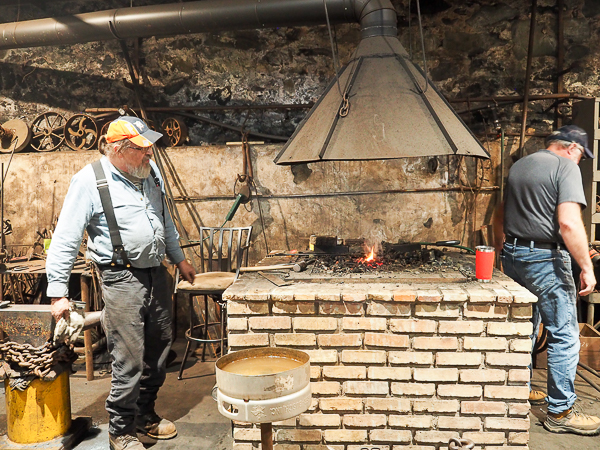
The blacksmith on duty is named David Arbelius (L). He gave a fascinating demonstration and I had to slap my hand to keep from buying one of his productions in the gift shop.
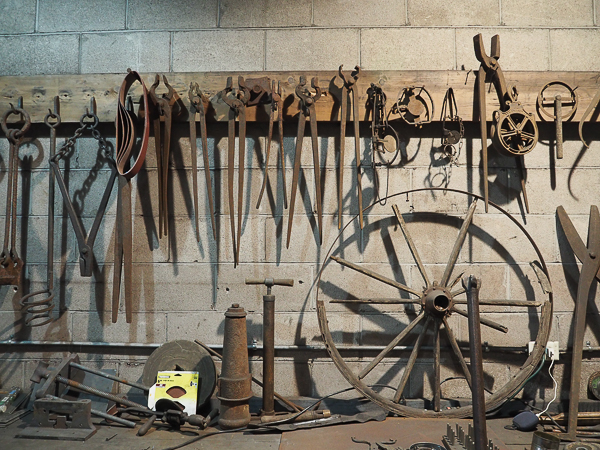
He had made some of the blacksmith tools on display.
During the working life of the mine, the smith was responsible for repairs to machinery and fabrication of needed tools.
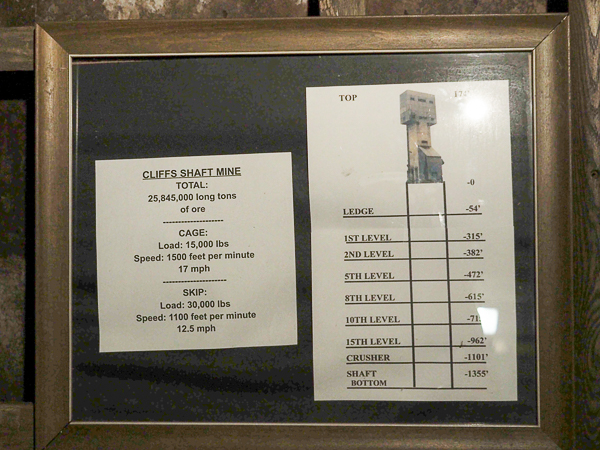
The mine was one of the largest in Michigan with 15 levels of tunnels. It was at one time the nation's largest producer of hematite before it closed in 1967. When I signed up for the tour I had halfway hoped that we would be able to go down the shaft, but was relieved that we could not after all.
The crusher on the lower level was gravity-fed and processed the larger ore rocks into a uniform size before hauling to the surface for transport.
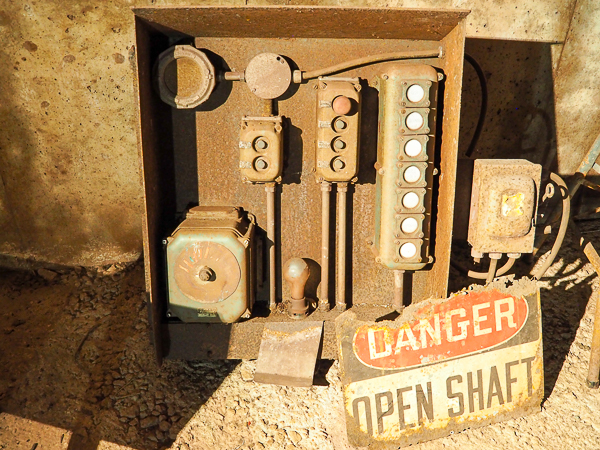
The control panel of the shaft elevators is complex. Men rode in "cages" and ore in "skips."
The sign is historic. The shafts are now covered with concrete.
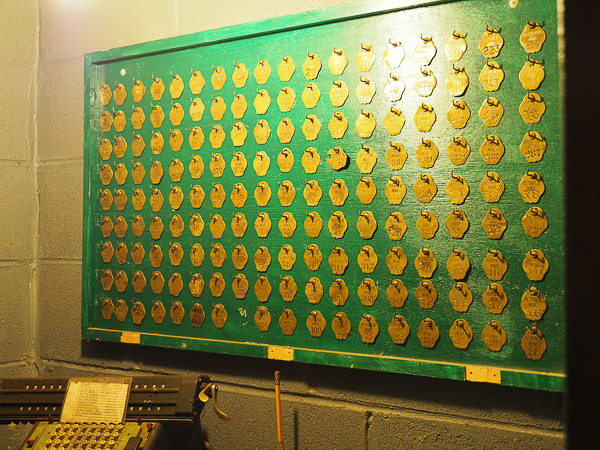
The "sign-out sheet" is similar to systems that we saw on cruise ships prior to everything being automated. Every miner had a tag that he picked up at the beginning of his shift and returned when he went home. At the end of the work day, they could tell at a glance if anyone had been left behind. More tragically, if there was an accident, they could tell who was missing.
Click your "back" button to return to the previous page or click for our picture album.